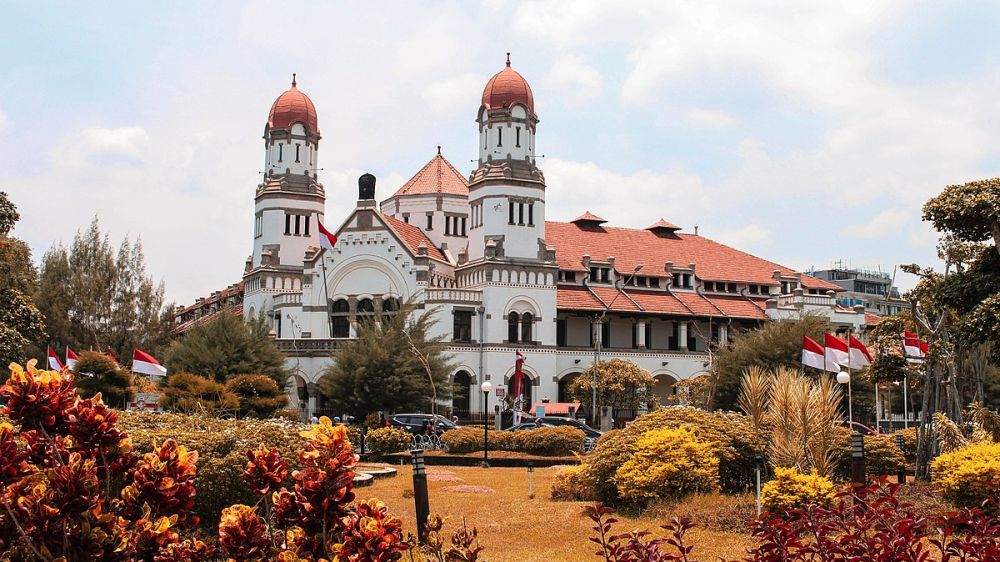

Lawang Sewu, which translates to "Thousand Doors" in Javanese, stands as an iconic colonial-era building located in Semarang, Central Java, Indonesia. This historical building has been a central piece of Semarang's architectural tapestry and has a tourism history that is as rich as it is complex.
Constructed at the turn of the 20th century, specifically between 1904 and 1907, Lawang Sewu was originally the headquarters for the Dutch East Indies Railway Company (Nederlands-Indische Spoorweg Maatschappij). The building's grand design, created by Dutch architect Prof. Jacob F. Klinkhamer (Klinkhamer & Brouwer), symbolized both the colonial power and the modernization of the transportation network during that era.
During World War II, the Japanese occupation saw Lawang Sewu repurposed as a detention center where prisoners of war were held. This dark period contributes to the building's haunted reputation, with stories of past sufferings lingering in local lore. Following Indonesian independence, Lawang Sewu became a symbol of the country’s struggle, serving various functions including as an office for the Indonesian railways (PT Kereta Api Indonesia) and at one time as a local art and cultural display center.
Lawang Sewu's transition into a tourist destination began as public intrigue was piqued by stories of its haunted past and architectural grandeur. Despite experiencing periods of neglect, concerted efforts to preserve Lawang Sewu have seen it restored and officially recognized as a national heritage site.
Today, Lawang Sewu is admired for its beautiful colonial architecture, featuring large windows, high ceilings, and an intricate layout. Visitors can explore the building's historical exhibits, take part in guided tours, and even experience the spooky night tours that delve into the building's ghostly tales.
In line with the latest tourism trends, there has been an increasing focus on sustainable tourism in Indonesia. Efforts to maintain and respect the site's historical and cultural significance have been paramount. Additionally, experiential tourism has taken root, with Lawang Sewu being a stage for cultural performances and events that attract both locals and international visitors.
For those planning to visit, it is located in the heart of Semarang, making it accessible and a must-visit for history buffs, architectural enthusiasts, and those looking to explore the city’s colonial past. With its blend of history, architecture, and mystery, Lawang Sewuk continues to be a standout tourist attraction in Semarang.
Lawang Sewu's place in the tapestry of Indonesia's historical tourist destinations is indelibly marked by its past and the preservation efforts that have allowed it to become a window into the country's colonial history and a beacon of cultural exploration.